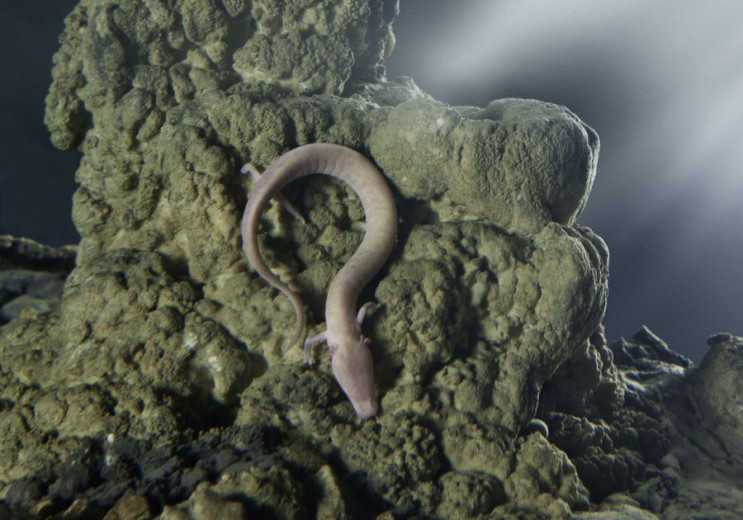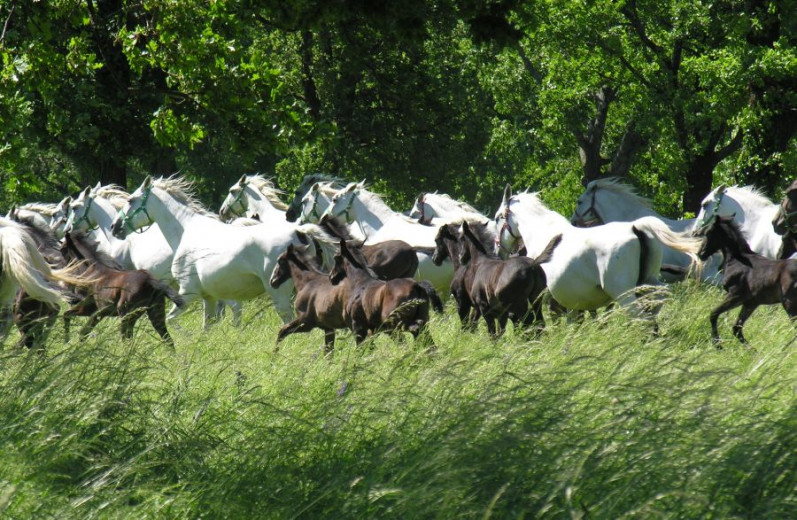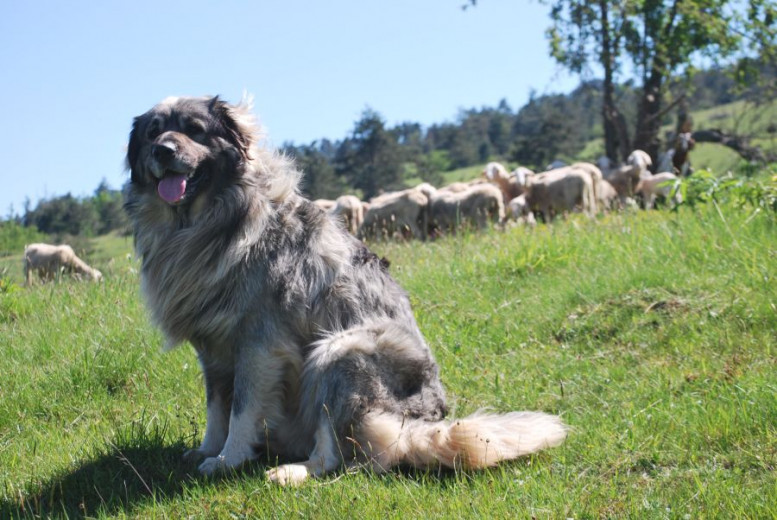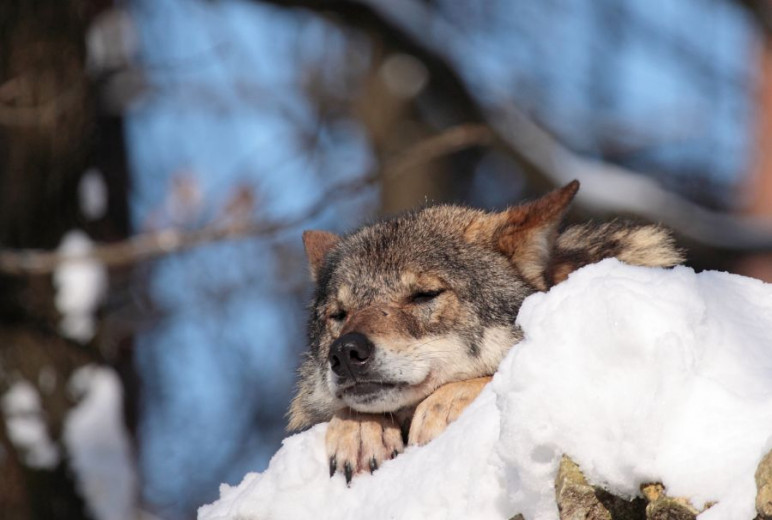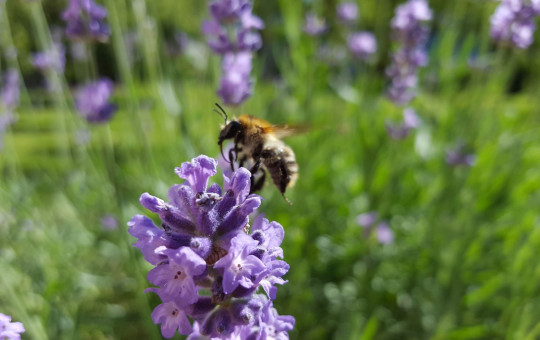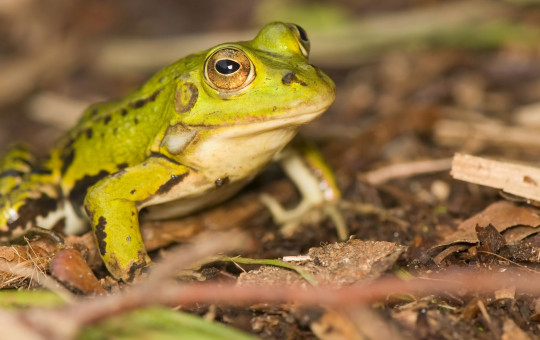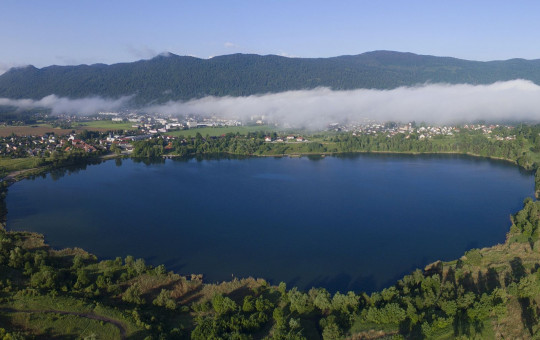Date: 25. March 2020
Time to read: 5 min
Sometimes one cannot help but wonder at the rich variety of animals that share our living space. Slovenia has fourteen indigenous breeds of nine domestic animal species.
There are three indigenous horse breeds (the Lipizzaner, the Posavski horse and the Slovenian cold-blooded horse) and four sheep breeds (the Bovec sheep, the Istrian "pramenka", the Bela krajina "pramenka" and the Jezersko-Solčava sheep), while other species boast a single indigenous representative: the Karst Shepherd dog, "cika" cattle, the Drežnica goat, the Krškopolje pig, the Štajerska hen, the Soča trout and the Carniolan bee. So there’s a true Slovenian animal kingdom!
And did you know that three predators (bear, wolf and lynx) also live in Slovenia?
Or that the Postojna Cave is the home of a mysterious creature, the largest permanently cave-dwelling animal in the world?
A Baby Dragon
The olm is the only vertebrate in Europe that lives solely in the subterranean world and its size of 25 to 30 centimetres makes it the largest such animal in the world. The tailed amphibian belongs to the ancient family of Proteidae. Its skin lacks any protective pigmentation, the blood showing through it making the animal a very pale pink in colour. People have often wondered whether the olm might in fact be a mythical creature, as it reminded them of a baby dragon.
An olm can live for up to 120 years. So what is the secret to its eternal youth? First, it has great regenerative capacity, being able to replace a lost limb with a new one. And an olm can survive for up to 10 years without food.
In 2016, one of Postojna Cave's olms laid eggs, which hatched some time later, capturing the attention of people all around the world.
An Endangered Beauty from the Soča River
The Soča trout is a freshwater fish living primarily in the River Soča, from which it got its name, and its tributaries; it is also found in the rivers of the Adriatic Sea catchment area. Smaller fish live in water of medium depth, while larger ones stay in the deep pools, mostly alone.
-
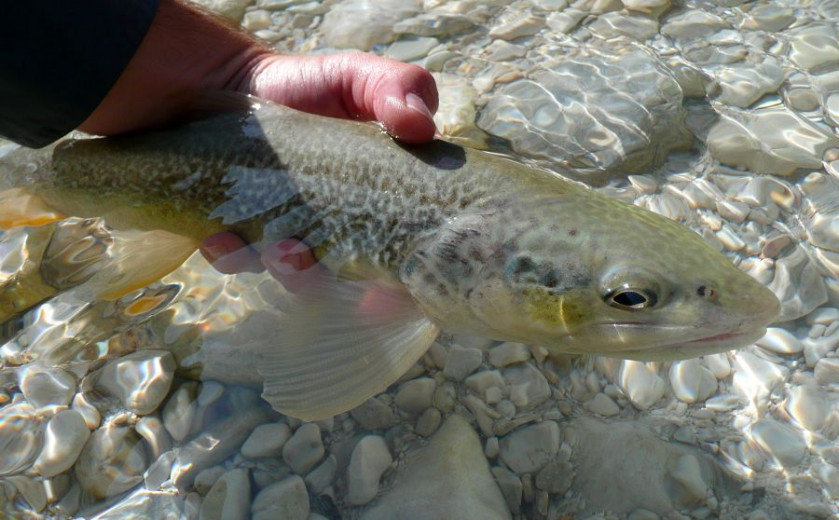 The Soča trout is much larger than other trout species, reaching up to one metre in length. It has a large head and a characteristic marbled pattern on its grey and white skin. The pattern may be dark grey, brown, olive green, copper red or even brown and yellow. Some Soča trout have red spots that merge with the marbled pattern. Photo: Luka Hojnik
The Soča trout is much larger than other trout species, reaching up to one metre in length. It has a large head and a characteristic marbled pattern on its grey and white skin. The pattern may be dark grey, brown, olive green, copper red or even brown and yellow. Some Soča trout have red spots that merge with the marbled pattern. Photo: Luka Hojnik
The Soča trout is the most endangered fish species in Slovenia.
It is threatened by water pollution, destruction of the natural environment and particularly by crossbreeding with the brown trout, which was introduced into its environment at the beginning of the 20th century.
The Soča trout protection programme, implemented in the upper Soča, managed to improve knowledge of the trout’s biology and ecology and of the number of trout species in the river.
By breeding pure populations and catching brown trout, fishermen are striving to make the Soča trout the prevalent species in the river again.
The Royal Horse
The Lipizzaner is one of the oldest cultural horse breeds in the world. The name of the breed is derived from Lipica, its point of origin in the Slovenian Karst. The cradle of the Lipizzaner is the Lipica Stud Farm, established by the Habsburg Archduke Charles II in 1580. The Lipizzaner is a harmoniously built, elegant and noble horse of medium frame suitable for performing classic dressage elements, riding and coach-drawing. It has a benevolent nature and a vivacious temperament.
Lipica trains first-class horses for the Spanish Riding School, where they demonstrate the "haute école" or "high school" movements of classical dressage. This is the highest degree of training that a horse can achieve.
It is an extremely demanding equestrian art whose movements are based on those naturally performed by the horse when at liberty. Lipizzaners are made to measure for this and are certainly the best at it of all breeds of horse.
The Guardian of the Herd
The Karst Shepherd is a centuries-old dog breed. Karst Shepherds were used as shepherd dogs in the area of Slovenian Karst, most commonly around Pivka. The breed was even mentioned by Janez Vajkard Valvasor in his famous book "The Glory of the Duchy of Carniola". Valvasor described Karst Shepherds as strong and intrepid dogs bred in the area of the River Pivka. The breed was internationally acknowledged in 1939 as the Illyrian Shepherd and finally in 1968 under the name used today. The animals were bred and spread by shepherds who needed strong and intrepid dogs to protect their herds from predators.
The Karst Shepherd is an efficient guardian and protector of the flock. Loyal and incorruptible, it will perform its duty unwaveringly.
It can also make a suitable family dog, characterised by great commitment to its master and other family members. Today the breed is found all across Slovenia and is in fact the only indigenous Slovenian dog breed.
Brown bear, wolf and lynx
There are not many countries in Europe with as many as three large predatory species living on their territory. Slovenia is one such. Brown bear, lynx and wolf are rare and protected inhabitants of our forests. They are threatened by the spreading of inhabited areas into their living space, unregulated grazing of small ruminants, road transport and other human interventions into nature.
The biggest predator in Slovenia is the brown bear, which can be found especially in the forests in the south of the country.
According to professional estimates, the number of brown bears living in Slovenia is about 400. The bear is difficult to spot, as it is a highly vigilant animal with good hearing and sense of smell. It retreats when it senses a human presence, only becoming a danger to people when it is surprised or approached too closely. It is very important as predator, being called a keystone species: thus the protection of the brown bear and its territory helps preserve other species too.
-
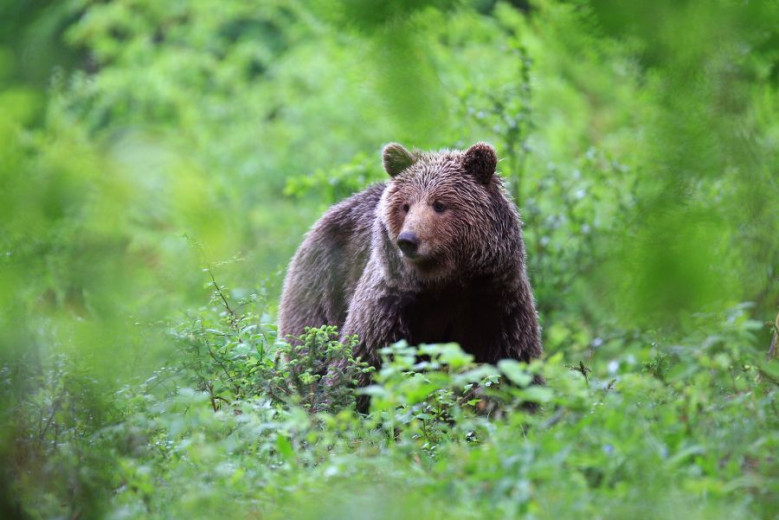 Bear females weigh around 100 kg, while males can even exceed 200 kg. The brown bear is up to 2.5 metres long. Although it may appear somewhat clumsy and slow, it can actually run at considerable speed. It is also a good swimmer, while some younger and lighter bears are good climbers too. Photo: Marjan Artnak/www.slovenia.info
Bear females weigh around 100 kg, while males can even exceed 200 kg. The brown bear is up to 2.5 metres long. Although it may appear somewhat clumsy and slow, it can actually run at considerable speed. It is also a good swimmer, while some younger and lighter bears are good climbers too. Photo: Marjan Artnak/www.slovenia.info
-
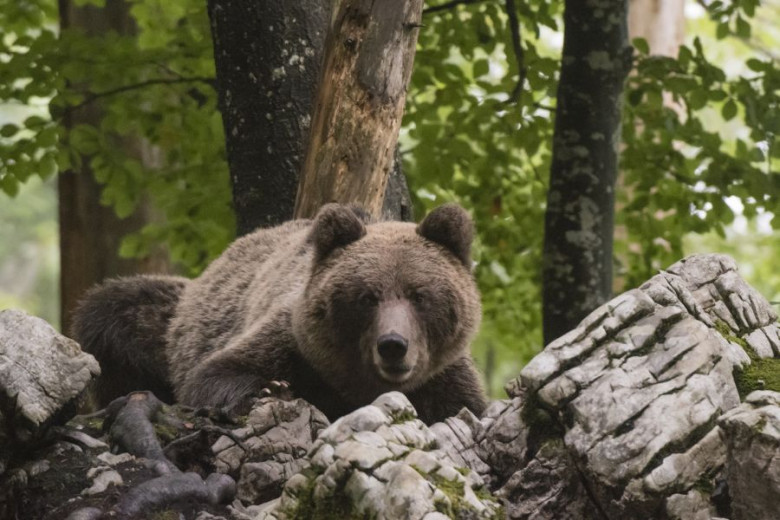 The biggest predator in Slovenia is the brown bear. Photo: Delta Images-GettyImages/GulliverFilm&Foto
The biggest predator in Slovenia is the brown bear. Photo: Delta Images-GettyImages/GulliverFilm&Foto
The lynx, the largest European feline species, was eradicated from Slovenia in the early 20th century, but six lynxes from Slovakia were released in Kočevski Rog forests in 1973.
The reintroduction of the lynx to Slovenia is considered one of the most successful in Europe.
Lynx are characterised by their reddish-grey fur marked with dark brown spots, tufts of hair on the tips of their ears and their short, black-tipped tails. They are shy animals that are difficult to encounter. But even if you do meet one, do not be afraid – lynx are not dangerous to humans.
Slovenia also preserved the wolf, which lives in the woods of Kočevsko and Notranjska.
According to professionals (from the SloWolf project), about 39 wolves live in Slovenia in 8 to 11 packs.
The structure of the packs is always similar, taking the form of a family: father, mother and their offspring of different ages. The wolf is not considered to be dangerous to people: no cases of human injuries caused by wolves have been confirmed in Slovenia, although several encounters between humans and wolves take place annually.

